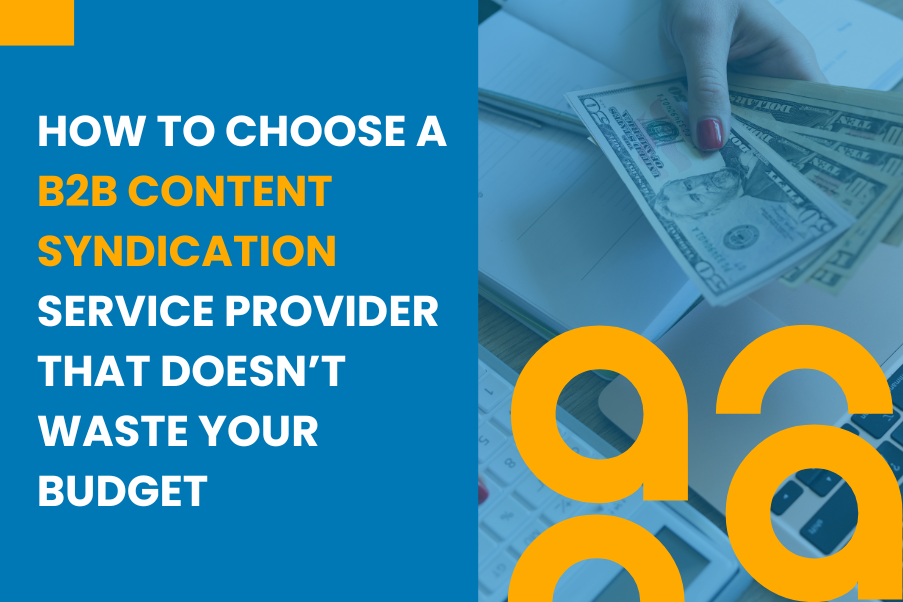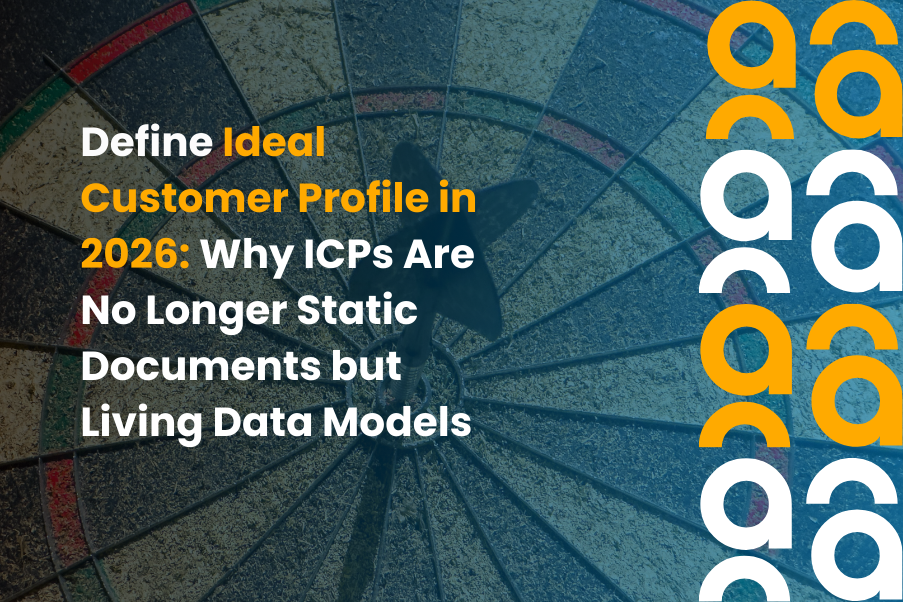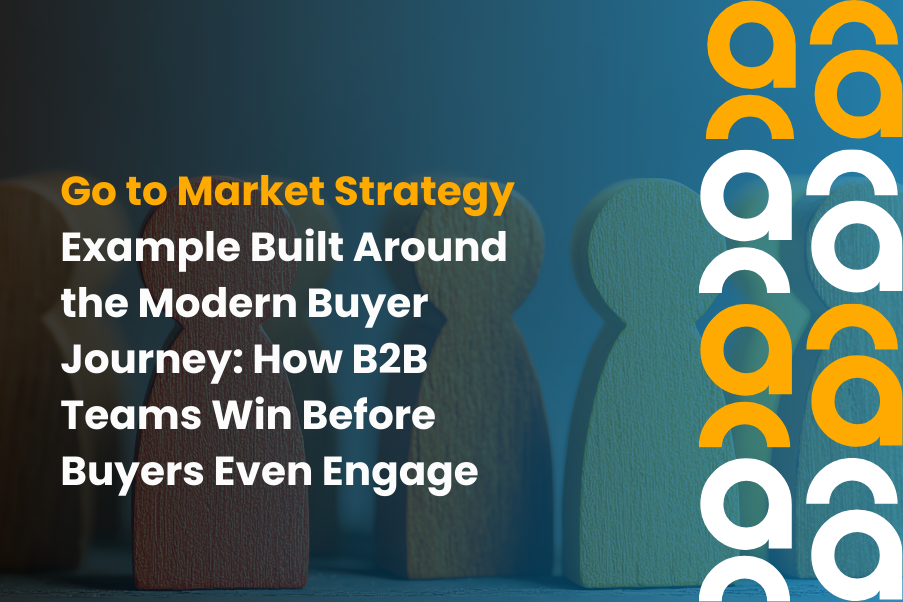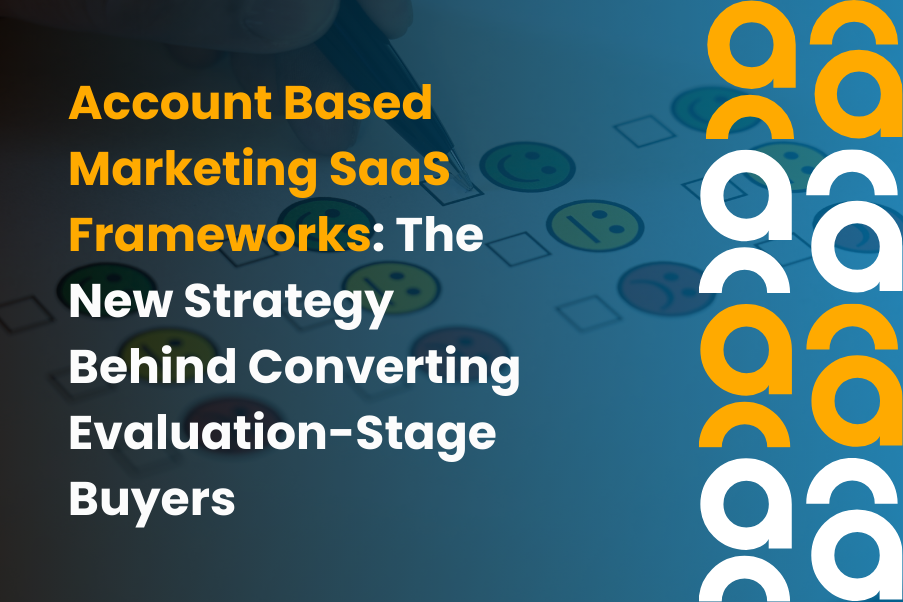How to Choose a B2B Content Syndication Service Provider That Doesn’t Waste Your Budget

Introduction
Ever felt like your content marketing budget disappears faster than your leads convert?
You spend months creating valuable assets, yet the results fall flat. The problem often lies not in your content but in the partner you choose to distribute it. Picking the right b2b content syndication service provider can turn your content into a consistent lead magnet, while the wrong one can drain your time, money, and trust.
Let’s explore how to find a provider that delivers real business growth instead of empty promises.
Begin With Strong Content Before You Choose a Provider
Every successful campaign begins with strong and valuable content. Even the best B2B content syndication service provider cannot fix confusing messages or offers that don’t matter to your audience.
Your first goal should be to polish your content so it really helps solve a problem and also answers an important question for your readers. Once that is done, the right partner can help expand its reach and make a bigger impact. This approach also helps you build a clear content distribution strategy that actually drives lead generation
A report on Market.biz shows that 74% of marketers believe content marketing plays a major role in generating leads.
This makes it clear that great results start with great content, so focus on creating quality pieces before thinking about how to share them.
Create a Smart Evaluation Checklist
Every provider brings something different to the table. Before you decide to partner with one, go through this checklist to evaluate a B2B content syndication service provider carefully:
- Who owns the collected audience data
- How intent signals are identified and shared
- What filters remove poor-quality leads
- How transparent the reporting system is
- Where your content will actually be displayed
These questions help you compare different b2b content syndication vendors and understand how each manages lead quality and reporting
A reliable partner will offer clear and confident answers. If their responses feel unclear or uncertain, it might be a good idea to think twice before moving forward.
Quality Leads Matter More Than Big Numbers
Many B2B content syndication vendors talk about delivering a huge number of leads. But quality matters more than volume.
Ask them to share case studies from campaigns similar to yours and check how many of those leads actually turned into marketing-qualified or sales-ready prospects.
Research shows that most syndicated leads need additional nurturing before they are ready for sales, so it is important to have a strong follow-up plan to protect your ROI.
Know What You’re Paying For
One of the biggest mistakes in syndication is not knowing how pricing works. When you look into a B2B content syndication service provider, make sure you clearly understand how the billing process will take place.
Common pricing models include:
- Pay per lead: The cost depends on the number of leads that are generated.
- Pay per engagement: You pay for actions like downloads or clicks.
- Pay per impression: You pay based on exposure or reach.
Be careful with pricing models that chase numbers instead of genuine engagement. Good B2B content syndication vendors set their pricing on the quality of leads rather than on how many they can deliver.
See the Results Before You Sign the Deal
Before signing a long-term deal, start with a short pilot campaign with your chosen B2B content syndication services. This helps you check their transparency, lead quality, and conversion rates without putting your entire budget at risk.
Take these three simple steps to get started:
- Start with a small and targeted audience group.
- Track cost per qualified lead with your other marketing channels to measure performance.
- Ask for full data access to cross-check the audience profile.
If the provider is not open about sharing performance data or results, it’s probably a sign that something is fishy.
Simple Comparison to Guide Your Choice
Features | Red Flag | Ideal Outcome |
Audience ownership | Provider hides data source | Full visibility into audience origin |
Lead Quality | Leads are unverified | Leads show verified intent signals |
Reporting | Only surface-level metrics | Detailed exportable reports |
Pricing | Flat rate per download | Quality-based or outcome-linked pricing |
This table helps you identify false or misleading offers before they drain your time and resources.
How to Check Lead Quality
When you test your provider, don’t just depend on basic reports. Use these tips to make sure the leads you receive are real and worth your time:
- Trace how each lead interacted with your content.
- Score leads using your internal qualification model.
- Share samples with your sales team for quick feedback.
If many of the leads don’t fit your target audience, your B2B content syndication service provider might not be doing the job right. Being open and sharing data can help you fix the issue quickly.
Before You Partner Up, Check for These Red Flags
Stay away from providers that show any of these warning signs:
- They don’t give access to raw data exports.
- They don’t clearly share where your content is published.
- Their pricing is based only on the number of leads.
Any B2B content syndication service provider that refuses to be transparent is not worth your money.
Team Alignment: The Secret to Syndication Success
Content syndication success works best when marketing and sales work hand in hand. Marketing creates content that matters and tracks how well it performs, while sales gives quick feedback and follows up with leads. When both teams stay in sync, those leads can turn into real opportunities.
When your teams work together, it makes your B2B content syndication strategy stronger and helps you build a content distribution plan that lasts longer. The right B2B content syndication service provider makes it easy for both teams to stay on the same page and convert more leads into long-term relationships
This coordination builds a stronger content syndication strategy that aligns both marketing and sales objectives.
Choose Between Platforms and Vendors
There is a clear difference between content syndication platforms and managed vendors. Platforms share your content across networks, while vendors handle targeting and optimization.
Together, they help you build a B2B content syndication strategy that actually delivers results.
The right B2B content syndication service provider helps you balance both methods and drive stronger outcomes.
To maximize performance, test both options. When you combine the reach of content syndication platforms with the targeting of managed vendors, your campaigns connect with the right audience and drive better-quality leads.
Final Checklist Before You Sign the Contract
Before you decide to work with any B2B content syndication service provider, make sure you have the following in place:
- A detailed campaign plan with goals and KPIs.
- A written agreement confirming data ownership.
- Access to real-time reports.
- A verified list of publishers or distribution channels.
Make sure your provider works with the best content syndication platforms to ensure high-quality placements. Once all these points are covered, you can move ahead with full confidence. These steps can help turn your B2B content syndication plan into a long-term win.
Final Thoughts
It is not about getting more leads, it is about getting the right ones. Pick a B2B content syndication service provider that focuses on transparency, lead quality, teamwork, and real results.
Begin with a small start, keep track of your progress, and keep improving your process. With time, this approach helps you build a stronger brand and steady revenue growth.
Stop wasting budget on leads that never convert. Partner with a provider that delivers real results and see your content turn into meaningful business opportunities.
Ready to make every piece of content count? Partner with a b2b content syndication service provider that turns engagement into real revenue. Start your journey with Almoh Media today.
Introduction
If you’re using content syndication, chances are you see it as just another way to get your content in front of more eyes. That’s fine, but there’s a lot more hidden beneath the surface. When you allow its full potential, content syndication ROI can surprise you, and it doesn’t take much to shift perception.
Let’s look at fresh data, outline a winning content syndication strategy, and show how U.S. B2B teams can get real value from it. Let’s begin!
What Is Content Syndication?
At its simplest, content syndication means sharing your B2B content: whitepapers, case studies, blogs on someone else’s site or network. This can be paid or free. You expand your reach, tap into new networks, and generate visibility, often reaching audiences you’d otherwise miss.
Why ROI From Content Syndication Deserves a Second Look
1. Huge lead production for relatively low spend
According to recent studies, the average cost per lead with content syndication is around $43. That’s far lower than other tactics, so even moderate conversion rates can offer solid returns.
2. Fast pipeline growth
Some platforms report that customers see 300–500% return on investment within three years. That’s not fluff – it’s real pipeline growth.
3. Verified conversion tracking methods
With UTM tagging and targeted vendor reports, U.S. marketers can track everything from initial syndication click to closed deal.
4. Built-in trust and positioning
Syndicating through known sites can give you indirect credibility, boosting brand awareness and authority without extra effort.
B2B Content Syndication Strategy: How to Do It Right
A good content syndication strategy starts long before content hits a third-party platform:
a). Pick assets that matter
Whitepapers, case studies, and long-form guides work best. They not only attract interest but also help establish your brand as industry-relevant.
b). Target lead quality, not rush volume
Instead of chasing clicks, target professionals. For example, top B2B firms average a 5.31% conversion rate on syndication offers.
c). Tag everything with UTM links
Measure traffic, engagement, bounce rates, and conversions back at your URL. This helps with syndication attribution.
d). Track core metrics
- CPL (cost per lead)
- MQL-to-SQL conversion rates
- Revenue per lead (use your average contract value)
e). Use the ROI formula
ROI= Revenue−Spend
Spend
For example, $1,000 spent → 50 high-quality leads → $5,000 average value = ($250k – $1k)/$1k = 249× ROI.
f). Optimize, rinse, repeat
Check what works by audience, site, and format. Then double down and drop what doesn’t.
Concrete U.S. ROI Stats You Can’t Ignore
| Metric | Statistics/Insight |
| Cost per lead | $43 average CPL |
| Syndication conversion rate | ~5.31% typical |
| Lead-to-deal conversion lift | 45% increase when focus is on quality |
| ROI over 3 years | 300%–500% reported |
| Projected industry growth | From $4.7 B in 2022 to $5.9 B by 2030 |
Content Syndication for Lead Gen: A Step‑by‑Step Plan
1. Define your ideal audience
Use buyer personas: titles, sectors, company size – so your content finds the right hands. This way, a sharper audience focus helps eliminate wasted spend and improves downstream lead quality.
2. Pick content with substance
Original research, how-to guides, competitive whitepapers – these both educate and convert. Plus, assets that solve specific problems tend to drive stronger engagement and more intent-driven leads.
3. Choose partners wisely
Use third-party platforms to reach U.S. B2B audiences. Look for those offering clear lead reporting and media kits. Before moving forward, ask for case studies or past performance metrics to make a more informed decision.
4. Structure campaigns with UTM tags
Make distinct tracking links for each partner and asset. This makes sure it’s easier to attribute leads, identify top performers, and compare ROI across channels.
5. Launch and monitor
Track CPL, CPL-to-SQL, cost per opportunity, pipeline driven, and revenue tied. At the same time, monitor activity in real-time to catch early trends and shift strategy fast if needed.
6. Review and refine monthly
Use metrics to shift spend toward top performers and tweak underperformers. As a result, consistent optimization keeps your syndication efforts aligned with revenue goals, not just vanity metrics.
How to Calculate Content Syndication ROI
- Calculate total spend (vendor fees + internal costs).
- Count total leads.
- Multiply leads by average deal size for potential revenue.
- Apply the ROI formula:
Revenue−Spend
Spend - Compare ROI over time to benchmark your initiatives.
This method is backed by multiple calculators and case studies.
Hidden Content Syndication Benefits
- SEO gains: Backlinks from quality sources can raise domain authority.
- Brand authority: Recognition on respected sites = credibility.
- Extended content life: A blog post can live on for months if syndicated well.
- Nurture acceleration: Leads from syndication are often further along in buying cycles.
Mistakes to Avoid and Fix Fast
Mistake: Only tracking clicks, not deals.
Fix: Tie every lead back to conversions with CRM integration. That way, you get a clearer picture of what’s actually driving revenue, not just traffic.
Mistake: Focusing only on cheap volume.
Fix: Go after quality; MQL-to-SQL rates matter most. Otherwise, your sales team will waste time on leads that won’t convert.
Mistake: Publishing irrelevant content.
Fix: Audit content – ensure tone, relevancy, and depth match syndication partner audiences. In doing so, you increase the chances of your content resonating with the right decision-makers.
Mistake: Not optimizing over time.
Fix: Regular performance review. Cut poor performers, boost winners. Over time, this helps improve ROI and keeps your content syndication strategy focused and results-driven.
Why Lead Quality Beats Volume
Not all leads are created equal. A smaller batch of high-intent leads can drive more revenue than a huge pool of low-interest ones.
Many B2B brands in the USA are shifting toward account- based syndication, where campaigns are matched to specific industries or companies. This helps improve conversion rates, shorten sales cycles, and increase customer lifetime value.
In short, prioritizing lead quality helps improve the long-term content syndication ROI, especially when targeting high-ticket accounts.
How AI Is Shaping the Future of Syndication
AI tools are starting to reshape content syndication strategy by analyzing behavior patterns and automating placements across high-performing channels.
With predictive scoring, marketers can now:
- Match content formats to individual user segments
- Forecast lead readiness using engagement scores
- Automate syndication at scale using content intent data
These innovations are raising the ceiling on what’s possible for B2B content syndication, especially for companies focused on measurable results.
About Almoh Media
Use metrics to shift spend toward top performers and tweak underperformers.
As a result, consistent optimization keeps your syndication efforts aligned with revenue goals, not just vanity metrics.
At Almoh Media, we specialize in high-impact content syndication for lead gen. We help B2B companies in the U.S. grow their pipelines by delivering:
- Verified lead generation from trusted channels
- Industry-specific targeting and campaign setup
- Transparent reporting tied to your sales funnel
- A proven strategy backed by real ROI
We understand the U.S. B2B buyer journey, and our syndication campaigns are built to generate demand, not just clicks.
Final Takeaway
Content syndication is an easy win if done smartly.
Focus on:
- Quality, not just volume
- Clear tracking and attribution
- Lead-to-deal conversions
- Continuous optimization
With $43 CPL, 5+ percent conversion, and long-term returns of 300–500%, most U.S. B2B teams can justify putting more budget behind it.
Ready to Get Real ROI from Content Syndication?
Let Almoh Media help you build a smarter lead-gen machine. We bring strategy, scale, and precision to content syndication – so your campaigns don’t just get seen; they convert. Reach out now to get started.
-
 Define Ideal Customer Profile in 2026: Why ICPs Are No Longer Static Documents but Living Data Models
Define Ideal Customer Profile in 2026: Why ICPs Are No Longer Static Documents but Living Data Models -
 Go to Market Strategy Example Built Around the Modern Buyer Journey: How B2B Teams Win Before Buyers Even Engage
Go to Market Strategy Example Built Around the Modern Buyer Journey: How B2B Teams Win Before Buyers Even Engage -
 Account Based Marketing SaaS Frameworks: The New Strategy Behind Converting Evaluation-Stage Buyers
Account Based Marketing SaaS Frameworks: The New Strategy Behind Converting Evaluation-Stage Buyers -
 What 2026’s Best-Performing Teams Do Differently when it comes to B2B Account-Based Marketing Campaigns
What 2026’s Best-Performing Teams Do Differently when it comes to B2B Account-Based Marketing Campaigns -
 B2B Account Based Marketing in an Over-Messaged World: The Rise of Context-First Personalization
B2B Account Based Marketing in an Over-Messaged World: The Rise of Context-First Personalization

